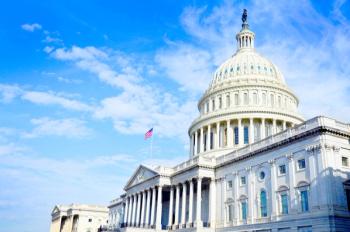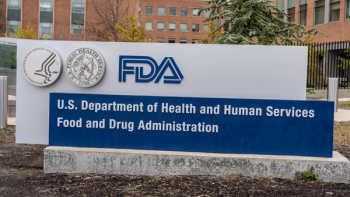
- Pharmaceutical Executive-12-01-2012
- Volume 0
- Issue 0
Obamacare, Innovation and Pricing
Tax and budget decisions will shape the healthcare market and drug research and regulation.
The re-election of President Barack Obama means an end to threats to dismantle the Affordable Care Act (ACA) and an opportunity to demonstrate that reform will expand coverage for the uninsured. Healthcare policy was a key point of dispute during the election campaign, marked by promises of better care and predictions of soaring costs by both candidates. Now the Obama administration is under pressure to implement the ACA as expeditiously as possible to establish insurance exchanges and new reimbursement models that will provide quality care at lower cost.
Jill Wechsler
The election result avoids a wholesale change in leadership for the Department of Health and Human Services (HHS), the Food and Drug Administration (FDA), and other federal agencies, but many top administration appointees may move on to other roles. House Republicans will continue to question various ACA requirements, and more legal challenges will surface in federal courts. But key provisions for pharmaceutical companies, such as rebates on drugs for seniors in the Medicare Part D coverage gap and authorization of a pathway for biosimilars, are unlikely to change.
Taxes and spending
Despite the importance of implementing health reform, the immediate priority for the administration and Congress is to tackle the so-called "fiscal cliff," as nearly $500 billion in tax increases and spending cuts are scheduled to kick in January 1, 2013 under a budget sequestration process. With Republicans maintaining tight control over the House of Representatives but losing ground in the Senate, much depends on the ability of President Obama to engineer some kind of compromise. A likely strategy is to agree now to raise the federal debt ceiling and to postpone serious debate on a more comprehensive budget plan until next spring.
Executives at biopharmaceutical companies are watching closely at how tax and budget proposals will affect their finances and the investment climate for biomedical R&D, as well as funding for healthcare programs, FDA, and NIH. The business community has pressed for corporate tax reform to make US firms more competitive globally and seek to head off broad tax hikes as a threat to investment and growth. Sharp spending cuts, however, would limit reimbursement for medical products and curb funding for research and efficient regulatory programs. Where a company stands on specific tax and spending options may depend on its recent profit and loss history, corporate structure, sales to public health programs, and overseas business operations. Pharma companies that rely more on sales to Medicare and Medicaid may prefer across-the-board budget sequestration than cuts in entitlement programs.
Curbs on pharma
Yet, there's unlikely to be any budget deal without reducing both public and private outlays for US healthcare, and drug prices and reimbursement are a prime target. Prior to the election, the Obama administration proposed to curb Medicare spending largely by reducing fraud and abuse and adopting reimbursement models that pay more for quality care. Now there's more talk about raising the eligibility age to 67, increasing the Part B premium and reducing utilization of new technology. And House Democrats have pressed for added rebates on drugs purchased by Medicare drug plans for low-income "dual-eligible" seniors, which could total more than $100 million over 10 years.
Counterfeits and Compounders
Outlays for drugs face challenges on all sides, including proposals to reduce spending on pharmaceuticals by federal employees and other federal health programs. The White House further proposes to save money by ending "pay-for-delay" generic-brand patent settlements and by limiting the exclusivity period on data for biotech therapies from 12 years to seven years. Some pharma critics are pressing for longer expiration dates on drugs to reduce waste and spending. Others champion academic detailing to disseminate findings from comparative effectiveness studies more objectively to providers. Payers and plans have taken aim at pharma co-pay coupons as a scheme to build patient demand for new, more costly medicines.
More transparency in drug prices and reimbursement, moreover, could steer providers and patients to less costly medicines, using tiered co-pays and benefit designs to influence choices. Expensive specialty medicines are a prime target, as seen in the recent campaign against the price for colorectal cancer treatment Zaltrap by physicians at Memorial Sloan-Kettering Cancer Center. Sanofi responded with 50 percent discounts for private payers, according to The Cancer Letter, a case that promises to encourage more physician and patient involvement in drug pricing issues.
Budget-cutting also threatens FDA and NIH initiatives. An 8.2 percent cut in the FDA budget, as proposed under the budget sequestration process, would reduce FDA's 2013 budget by $320 million and prompt the agency to lay off some 1000 employees, according to consultant Steven Grossman. And proposals to reduce NIH funding, which range from about $2.5 billion under sequestration to some $4 billion, would eliminate more than 2000 research grants and jeopardize the pace of new drug and biotech discovery, just as a number of R&D initiatives are helping to fill depleted new drug pipelines.
New payment models
A related concern is that serious budget-cutting will slow ACA implementation and discourage states from building insurance exchanges and expanding Medicaid programs. HHS has revved up its rule-writing operation to meet multiple deadlines for establishing exchanges and defining regulations and benefits. Many state governors and legislatures have been reluctant to commit to new ACA programs amidst political uncertainty. HHS responded by giving states extra time to submit plans for establishing their own exchanges, and more time to decide whether to "partner" with the feds on this operation. But continued talk about cutting promised premium subsidies and extra Medicaid funds makes states nervous about future support for new health programs.
The challenge for the second Obama administration is to determine whether Washington can work with states to establish and operate exchanges, and if this and other initiatives will succeed in extending coverage to millions of uninsured. Pressure to reduce healthcare expenditures at the same time will require a shift to pay for value vs. volume, notes Paul Keckley of Deloitte Center for Health Solutions. Pharma and providers will be affected by the emergence of medical homes, accountable care organizations, bundled payment approaches, and value-based pricing, and will have to adapt to survive.
Jill Wechsler is Pharmaceutical Executive's Washington correspondent. She can be reached at
Articles in this issue
about 13 years ago
Pharmaceutical Executive Digital Edition - December 2012about 13 years ago
Germany's Price Reform Revolutionabout 13 years ago
Transforming Drug Development: A Lilly–Covance Case Studyabout 13 years ago
The Puzzle Master: EMA's Guido Rasiabout 13 years ago
Top Medical Innovations for 2013Newsletter
Lead with insight with the Pharmaceutical Executive newsletter, featuring strategic analysis, leadership trends, and market intelligence for biopharma decision-makers.




